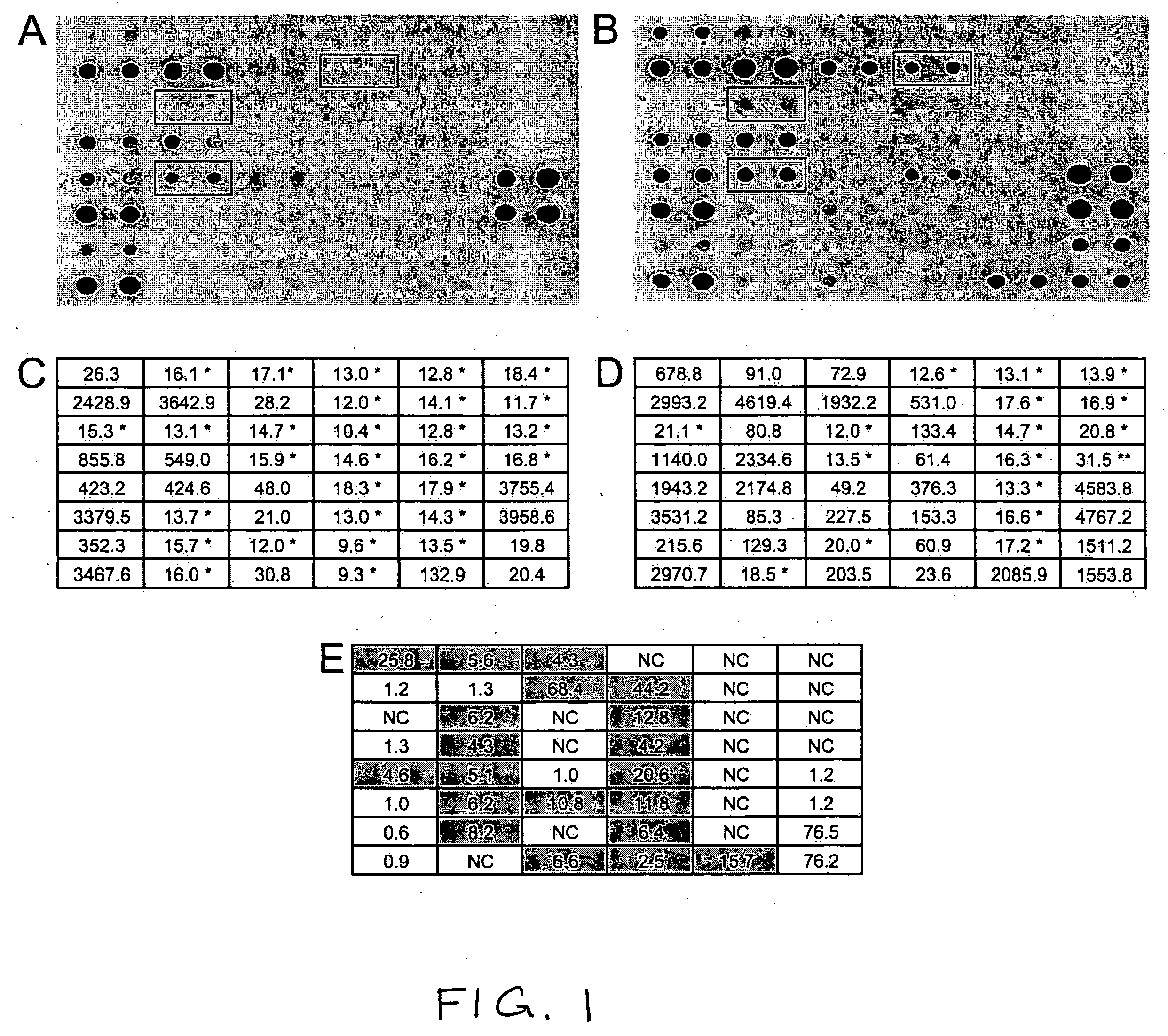Regulated genes in cervical cancer
a technology of regulated genes and cervical cancer, applied in the field of regulated genes in cervical cancer, can solve the problems of high incidence and mortality of the disease, 5,000 deaths each year, and difficulty in detecting cancerous phenotypes, and achieve the effect of suppressing or inhibiting the development of cancerous phenotypes
- Summary
- Abstract
- Description
- Claims
- Application Information
AI Technical Summary
Benefits of technology
Problems solved by technology
Method used
Image
Examples
example 1
A Panel of Genes Transcriptionally Upregulated in Squamous Cell Carcinoma of the Cervix Identified by RDA, Confirmed by Macroarray, and Validated by Real-Time Quantitative RT-PCR
[0112] The research presented here uses representational difference analysis (RDA) to isolate a relatively small candidate pool of transcripts upregulated in disease versus normal tissue in a single patient. RDA has been used to identify potentially upregulated transcripts in other cancers. The selected pool of candidate transcripts is then screened by comparative hybridization on DNA macroarrays with amplified cDNA from the original patient from which they were derived and seven other patients. Real-time quantitative RT-PCR is firmly established as a highly sensitive gene-specific method for determining transcript levels of selected genes and is used here to confirm the transcriptional upregulation of several of the genes identified by the RDA procedure across multiple patients.
Methods
[0113] Patient spe...
example 2
[0149] A list of statistically validated genes from five patients using paired (normal vs disease) analysis was prepared. The lists are set forth in Table 5 (upregulated sequences) and Table 6 (down-regulated sequences). The Tables list in the first column the accession number in Genbank; in column 2, the score; and column 3, the fold change in expression (positive or negative). The analysis forward limited the ratio to 2.0 fold, and and 95% confidence as the cut offs.
[0150] The statistical analysis was done with an excel plug-in, based on the SAM analysis of Tusher et al. (2001) PNAS Vol 98 no 9.
[0151] All of the patients had eight 100 μl tube of amplification for DpnII normal, NlaIII normal, DpnII disease and NlaIII disease. Each 8 tube pool was purified, quantitated and biotinylated using 4×1 μg aliquots. Normal biotinylations were quantitated and equally pooled, disease amplicons were treated similarly.
[0152] CEL files from Affymetrix analysis MAS 5 were open with Array Assis...
PUM
| Property | Measurement | Unit |
|---|---|---|
| total volume | aaaaa | aaaaa |
| total volume | aaaaa | aaaaa |
| temperature | aaaaa | aaaaa |
Abstract
Description
Claims
Application Information
 Login to View More
Login to View More - R&D
- Intellectual Property
- Life Sciences
- Materials
- Tech Scout
- Unparalleled Data Quality
- Higher Quality Content
- 60% Fewer Hallucinations
Browse by: Latest US Patents, China's latest patents, Technical Efficacy Thesaurus, Application Domain, Technology Topic, Popular Technical Reports.
© 2025 PatSnap. All rights reserved.Legal|Privacy policy|Modern Slavery Act Transparency Statement|Sitemap|About US| Contact US: help@patsnap.com



